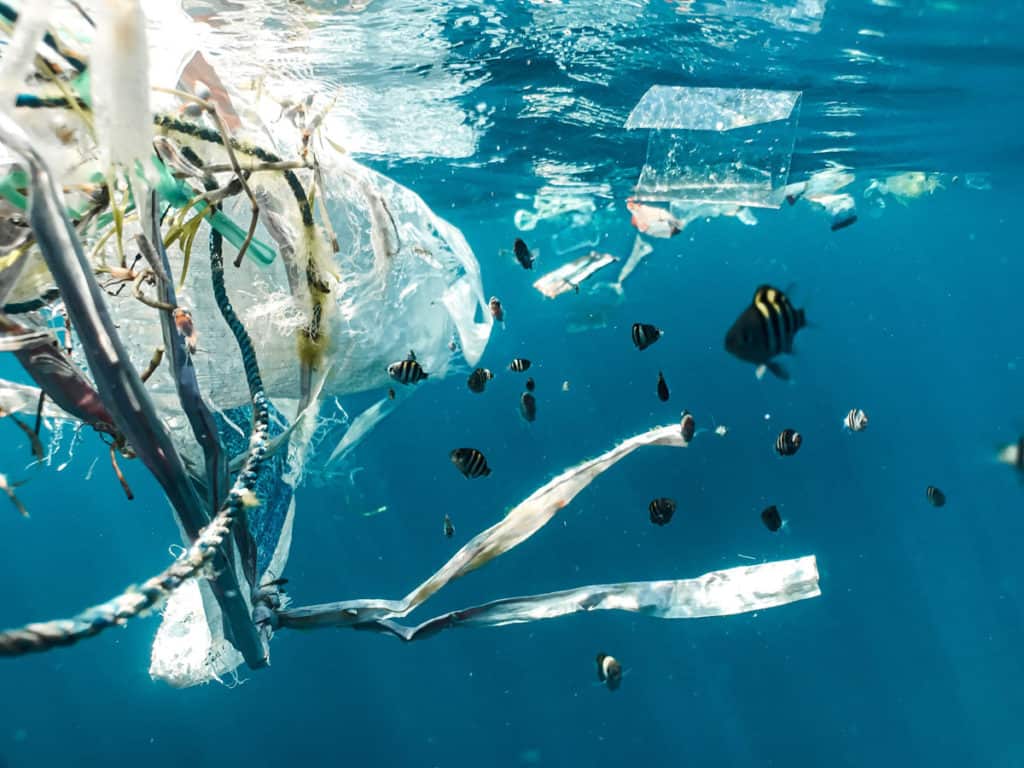Writing by IRA ARZ, Photo by Naja Bertolt Jensen
DECEMBER 29, 2021
We make over 300 million tons of plastic every year, and 8 million tons of that is predicted to go into our oceans” by Fashion Revolution
Plastic — the ruin of our planet, this flimsy material is what’s going to cost us the earth, starting from the depth of our ocean. Look around the room you are in right now, there are most certainly a few if not many products in it that are made of plastic. This polymeric material doesn’t just come in a solid form and is molded into your typical household items, plastic microfibres are sitting in almost all the clothes that exist in your closet. Our clothes impact the environment in one way or another, and microplastic is one of the biggest threats to life below water.
What is microplastic?
As of 2020, plastic production exists as a $600 billion global industry, with its life-cycle end accountable for approximately 8 million metric tons ending up in the oceans annually. [1] Plastic is the most common type of marine debris found in our ocean and they come in all shapes and sizes, but of those, there are some that are less than five millimetres in length, (approximately the size of a sesame seed) and those are considered as “microplastics”. [2] There are two types of microplastic that can be found in our oceans and beaches: primary microplastics and secondary microplastics. Primary microplastics include 1: Nurdles, small pellets that are mixed together, melted, and molded to make larger plastics, 2: Microbeads which are usually found in skincare products such as face scrub, and 3: Fibers, commonly found in synthetic plastic garments that are made of fibers such as nylon and polyethylene terephthalate (PET).
There is also secondary microplastics that come in the form of large plastic pieces and are then broken down into millions of smaller pieces, usually through the impact of aging, environmental conditions, and pH. [1]
| Particle Category | Diameter Range (mm=millimeters) |
| Nanoplastics | < 0.0001 mm |
| Small microplastics | 0.00001 – 1 mm |
| Large microplastics | 1 – 4.75 mm |
| Mesoplastics | 4.76 – 200 mm |
| Macroplastics | > 200 mm |
Table via Our World in Data

How our clothes impact the oceans and seas
When we wash our clothes, they swish and swirl around in the washing machines, and when that happens, plastic microfibres usually detach off and go into the wastewater. Due to the size of these tiny beads of microfibres, they are commonly ingested by sea animals, many of which are consumed by us. When ingested, they can cause gut blockage and changes to oxygen levels and overall health to the cells in our body. Additionally, the polymers that create microfibres contain chemical additives such as plasticisers, a substance used in the production method of creating plastic to improve its flexibility, and antimicrobial agents (a harmful chemical that stops the growth of microorganisms like bacteria).[3] All of this are being poured out into the water and the environment to be consumed by living creatures.
What can the fashion industry do?
There are several methods to reduce the release of synthetic fibers into water waste, these include brushing, laser and ultrasound cutting, material coatings, and pre-washing the fabrics. [3] As for the government, implementing laws on developing commercial washing machines filters that can capture microfibres will allow major prevention on the release of microfibres into our oceans. As of February 2020, France is the first country in the world to take steps in the fight against microfibre pollution. As of January 2025, all newly produced washing machines in the country are required to include a filter to stop synthetic fibers from polluting the water.
What can we do at home? There are several ways to prevent the release of microfibres into the waterways by using a Cora Ball and Guppyfriend bag, which are devices created to capture microfibres in the washing machine. This is not going to solve all our problems, but it is a good way to divert microfibres from entering our planet’s ocean.
Further Reading
1. Gonçalves A. The Impacts of Microplastics: From Tea Bags and Bottled Water to Salt and Fish [Internet]. 2020. Available from: https://youmatter.world/en/microplastics-types-effects-humans-nature/
2. National Ocean Service. What are microplastics? [Internet]. 2021. Available from: https://oceanservice.noaa.gov/facts/microplastics.html
3. Sommers D. Our clothes shed microfibres – here’s what we can do… [Internet]. 2019. Available from: https://www.fashionrevolution.org/our-clothes-shed-microfibres-heres-what-we-can-do/
4. Coral Ball. Available from: https://www.coraball.com/
5. Guppyfriend. Available from: https://en.guppyfriend.com

